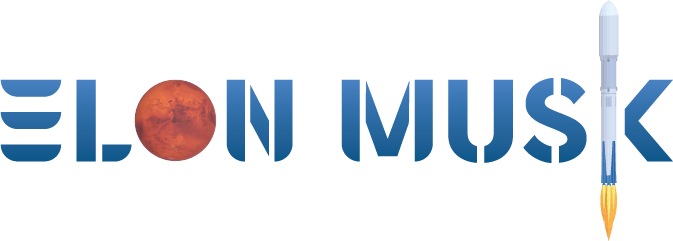
Here's why the first non-Tesla EV with a NACS port charges slower with it
- by Green Car Reports
- Dec 24, 2024
- 0 Comments
- 0 Likes Flag 0 Of 5

Speediest Ioniq 9 charge rate also relies on adapter
The automaker has released a similar comparison for its upcoming Ioniq 9 electric SUV, which will have a much larger 110.3-kwh battery pack and ship initially with the NACS port. With it and a CCS adapter the Ioniq 9 will charge from 10-80% in 24 minutes (with a peak of 233 kw), whereas it will take 38 minutes natively on NACS, using Tesla Supercharger V3 hardware.
So in an ideal situation—certainly harder to come by with CCS than with Supercharger hardware—a CCS adapter could save 10-14 minutes with Hyundai’s 800-volt E-GMP EVs.
Hyundai Ioniq 9 charge times for NACS (Supercharger) vs. CCS
In the coming months, the whole Ioniq 5 lineup is getting the NACS port—except for the high-performance Ioniq 5 N, which will stay Korean-built for now and keep offering its CCS port for this year, while the rest of the Ioniq 5 lineup is shifting to U.S. production. Hyundai has already announced that all U.S.-market Ioniq 5 models are due to be sourced from Georgia eventually.
It hasn’t yet said exactly when the NACS port will arrive on Ioniq 6 electric sedans, but that’s also due for production at Hyundai’s so-called Metaplant America in Georgia.
2025 Hyundai Ioniq 5 N
Hyundai is using its own charge ports and adapters, rather than buying them from Tesla, and it’s said that this will enable the full range of bidirectional capabilities of its latest E-GMP electric vehicles, including V2L to power accessories, camping gear, and more.
Supercharger access will come in the first quarter of 2025, but it will require that drivers initiate charging through the Tesla app initially rather than using Plug and Charge via Hyundai’s app and interface.
Superchargers won’t lag for long
Tesla announced its V4 Supercharger hardware in 2022, and it made some first installations in 2023, but there’s been no widespread rollout as of yet. And although a number of locations have included the V4 post, including longer charge cords and upgraded connectors, the hardware behind it remained missing.
On November 18, Tesla finally confirmed that the full V4 is on the way soon, with sites backed by actual V4 Cabinets in permitting now and due to be opened in 2025.
Tesla Supercharger V4 Cabinet upgrade set for 2025 (screencap)
Each V4 Cabinet powers eight charging posts, versus four posts each for V3 cabinets, which Tesla notes means a reduction in the footprint of the hardware and the overall complexity—a factor that means more sites will come online faster.
Tesla says that the V4 Cabinet will be able to deliver up to 500 kw for cars and up to 1.2 MW for the Semi. It hasn’t said where exactly peak power will be for the Cybertruck, but it notes that this change will mean 30% faster charging for that model. That roughly corresponds to the peak power of 327 kw that multiple sources have reported for the Cybertruck when using CCS adapters (and tapping into its full 800-volt charging potential.
Charge rates for Tesla’s own Model 3 and Model Y, by the way, won’t change.
2022 Hyundai Ioniq 5 and Kia EV6 fast-charging - Lacey, WA
What it means: Look for the most convenient charger
In all, for Hyundai EVs, a time difference of 10-14 minutes likely won’t matter much in the scope of things—especially considering that Tesla Supercharger stations tend to be more reliable and tend to offer locations that are sometimes better-located along typical road-trip routes.
That said, it’s pretty close to the difference that Hyundai owners face in whether to choose a 150-kw CCS connector directly on the way, or go slightly off-route for a 350-kw connector. As we’ve pointed out before, the vast majority of the time, 150-kw connectors will provide such a speedy charge on EVs like the Ioniq 5 or Ioniq 6, with relatively lean battery packs and long range from them, that you shouldn’t seek out 350-kw connectors. Just go with the more convenient location.
But soon, with Tesla Supercharger cabinets and connectors at last able to deliver the voltage that EVs like the Ioniq 5, Ioniq 6, and Ioniq 9 can all take advantage of, finding a more convenient Tesla connector will no longer potentially mean a longer charging stop. And with a push of infrastructure coming from Ionna, which is supported by Hyundai as well as six other automakers, there’ll be no shortage of high-power, high-voltage connectors, no matter which standard.
Tags:
Please first to comment
Related Post
Stay Connected
Tweets by elonmuskTo get the latest tweets please make sure you are logged in on X on this browser.
Sponsored
Popular Post
Middle-Aged Dentist Bought a Tesla Cybertruck, Now He Gets All the Attention He Wanted
32 ViewsNov 23 ,2024
Tesla: Buy This Dip, Energy Growth And Margin Recovery Are Vastly Underappreciated
28 ViewsJul 29 ,2024






 Energy
Energy



















